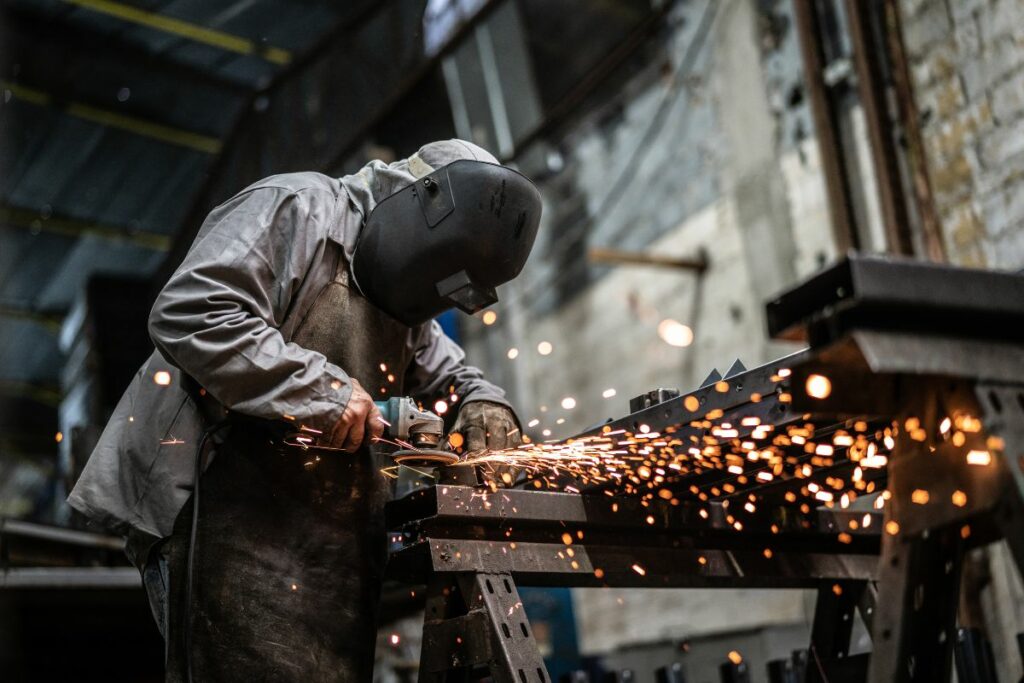
In the process of welding, two or more pieces of metal or thermoplastics are joined using heat, pressure, or a combination of both. It is an essential tool in manufacturing, construction, and reparation. The success of a welding project depends largely on the materials being welded, as not all materials can be welded together and some require specific welding techniques. In this blog post, we’ll explore the materials that are most suitable for welding.
As one of the most commonly used welding materials in the world, steel is durable and strong, and as such, a versatile material that can be used for various practices. As with most materials, different types of steel require different welding techniques to work properly. Low-carbon steel, for example, is easy to weld using most welding techniques, while high-carbon steel requires preheating and post-weld heat treatment to avoid cracking. Stainless steel is also a popular material for welding, but it requires specialized welding techniques to maintain its corrosion resistance.
Aluminum is another popular welding material that is used particularly in the aerospace, automotive and construction industries. It is a lightweight, corrosion-resistant material that can be easily formed into different shapes. However, aluminum has a high thermal conductivity, which means it dissipates heat quickly. This makes it difficult to weld using traditional welding techniques. The solution to this problem is using a specialized welding technique such as TIG (tungsten inert gas) welding or MIG (metal inert gas) welding with pulse settings.
Copper and brass are two materials that are commonly used for plumbing and electrical purposes. These materials are easy to work with and have excellent conductivity properties. However, copper and brass are also prone to cracking during welding due to their high thermal conductivity. Welding techniques such as TIG welding with a copper or brass filler rod can be used to prevent cracking.
Titanium is a strong, lightweight, and corrosion-resistant metal that is commonly used in aerospace, medical, and marine industries. Welding titanium can be a complex and challenging process due to the unique properties of the metal. Titanium has high reactivity with oxygen and nitrogen at high temperatures, making it prone to contamination and embrittlement during welding. To weld titanium, specialized techniques such as gas tungsten arc welding (GTAW) or laser welding are used.
When talking about welding, one will instantly think of different kinds of metal, but thermoplastics are also suitable for welding. This material is commonly used for plumbing, medical devices, electronics, the automotive and aerospace industry, and so forth. However, the welding process for thermoplastics is different from that of metals.
Instead of only using heat, thermoplastics are welded using pressure and vibration. The two most common techniques for welding thermoplastics are hot gas welding and ultrasonic welding. Hot gas welding uses a stream of hot air to soften the plastic, while ultrasonic welding uses high-frequency vibrations to create friction and melt the plastic.
Cast iron is a strong and brittle material that is commonly used in engine blocks and machinery. However, it is also prone to cracking during welding due to its high carbon content. To weld cast iron, preheating and post-weld heat treatment are required to prevent cracking. A specialized welding technique called nickel-based welding is also used to weld cast iron.
Welding is a versatile process that is indispensable in most industries. However, as with most projects, the success of a welding project depends largely on the materials being welded. Some materials, such as steel and aluminum, are easy to weld using traditional welding techniques, while others, such as titanium and cast iron, require specialized techniques to achieve a successful weld. Choose the right welding technique for the material being welded to ensure a strong, durable weld that will last for years to come.